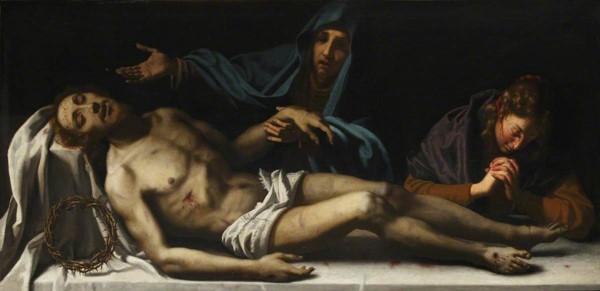The artistic depictions of the thirteenth Station of the Cross are some of the most challenging to view. The sight of Jesus’s body being placed in the arms of his mother is emotive at best, and often distressing.
Nicholas King SJ contemplates one image of Mary leaning over the body of her son – Cigoli’s ‘The Pietà’ – and finds the Mother of Jesus demanding a response from the one observing the painting: ‘What have you done to him?’
But the dialogue between Mary and the viewer does not stop there. A mother who has looked upon her son’s lifeless body will never forget the sight, even in this most unique of cases where Mary has seen her Risen Lord again. And so imagine the Mary of this painting speaking to you after her future encounter with her resurrected son, when the pietà is a memory to her:
‘So you are asking me what it was like, are you? That is a bit of a daft question, if I may say so; you have to remember, even though it was a long time ago, that I had just watched my beloved son die that disgusting death. That is something that no mother should ever have to see. Anyway, there it was, and I was sitting alone in the dark that night, and I heard that whistle that he always used (mothers and sons often have that sort of signal, you know); and it was him, all right.
‘Are you asking what it was like? You’d better think a bit about it before you ask questions like that; but, yes, there was a joy there, a kind of fierce joy that I don’t think that you can understand unless you have been through it yourself. And there he was; and I’m not sure what I said, perhaps “Oh it’s you is it?” or something silly like that. And I can’t tell you what it was like, except that we were in a kind of a dance, round and round. It was, I can tell you, like nothing else, ever.
‘Did I know it was going to happen? Well, he had said something about it, that he would be raised again after three days, that time – those times, really – when he predicted that the authorities were going to kill him; but you never know, do you?
‘And yes, later on, they were there, the boys, his boys, fishermen and others. Some of them looked a bit hesitantly at me, because I knew that they had run away when he needed them, and left us, the womenfolk, to go through the awfulness. But I couldn’t be cross with them, for all their silly boasting like “I’ll die for you, Jesus”, “I’ll even go to prison with you”; because they were only boys, and not very brave; but they really did love him, and it showed, in the end. They were so pleased to see him afterwards.
‘So there you are; that’s what it was like, that night, after my world had come to an end, and suddenly it all came back together again. And I can tell you this: there was no “hallucination” there, or what they call now “wishful thinking”. You know, if you are a mother: this was the real thing, the same body that I had held when it was born, and that I had watched die horribly. It was him all right. And I can’t really describe how it felt, thank you.’






